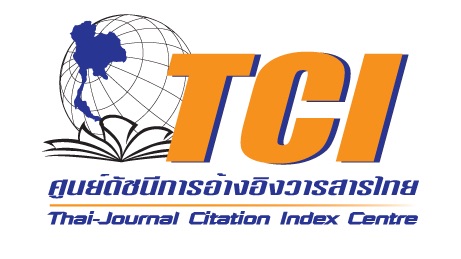The Creation of Thai Folk Dance: Rum Tone Nonthai
Keywords:
Folk-Arts of Korat, Creative Performance, Ram Thon Non ThaiAbstract
The objectives of this research were 1) to study the history and components of the traditional dance performance called "Ram Thon" in Ban Khok Mongkol, Samrong District, Nakhon Ratchasima Province, and 2) to create and develop a folk-art performance, the "Ram Thon-Non Thai" set. The research methodology included structured interviews and subgroup meetings, analyzing perspectives of individuals involved and experts in various fields, and extracting information from documents, scripts, books, articles, and previous research.
The results of this research were as follows: 1. The origin and elements of the "Ram Thon" dance in Ban Khok Mongkol: The tradition of performing the "Ram Thon" dance in the community of Ban Khok Mongkol is deeply rooted in the lifestyle and beliefs of the local residents. The dance, performed during ceremonies to honor ancestors, involves both solo and paired movements. It incorporates rhythmic tones that can be played in unison or as a duet. The use of molded glutinous rice in the form of 12 silver and 15 gold pieces symbolizes prosperity, encouragement, and protection against illness. 2. This practice signifies the community's belief in generating blessings, strength, and warding off diseases and fevers. The residents of Ban Khok Mongkol commonly participate in "Ram Thon" during traditional events, such as Songkran celebrations and community festivities, for entertainment purposes. The creation of a folk-art performance, the "Ram Thon - Non Thai" set comprises seven aspects, including conceptualization, choreography, dance movements, music and singing, costumes, stage arrangement, performers, and supporting equipment. The development process can generate aesthetic excellence in the presentation of traditional performing arts while preserving and expressing the cultural identity associated with the "Ram Thon" dance.
References
ปิ่นเกศ วัชรปาณ. (2559). การสร้างสรรค์ผลงานนาฏศิลป์. สาขาวิชานาฏศิลป์ไทย คณะครุศาสตร์ มหาวิทยาลัยราชภัฏอุดรธานี.
พจมาน สมรรคบุตร. (2538). แนวคิดประดิษฐ์ท่ารําเซิ้ง. สำนักส่งเสริมวิชาการสถาบันราชภัฏอุดรธานี.
พีระพงศ์ เสนไสย. (2546). นาฏยะประดิษฐ์. ประสานการพิมพ์.
สมหวัง คงประยูร. (ม.ป.ป ). ศิลปะพื้นบ้าน. โรงพิมพ์ส่งเสริมธุรกิจ.
สุรพล วิรุฬห์รักษ์. (2547). วิวัฒนาการนาฏยศิลป์ไทยในกรุงรัตนโกสินทร์ พ.ศ. 2325-2477 (พิมพ์ครั้งที่ 2). จุฬาลงกรณ์มหาวิทยาลัย.
อมรา กล่ำเจริญ. (2546). รําโทน: กรณีศึกษาเฉพาะกรณีอําเภอสามโก้ จังหวัดอ่างทอง. งานวิจัยภาควิชานาฏศิลป์และการละคร มหาวิทยาลัยราชภัฏพระนครศรีอยุธยา.
Downloads
Published
How to Cite
Issue
Section
License
Copyright (c) 2024 Journal of Human and Society, Sisaket Rajabhat University

This work is licensed under a Creative Commons Attribution-NonCommercial-NoDerivatives 4.0 International License.







